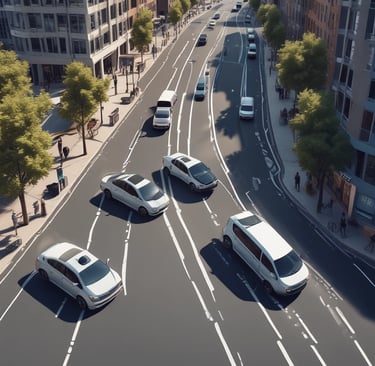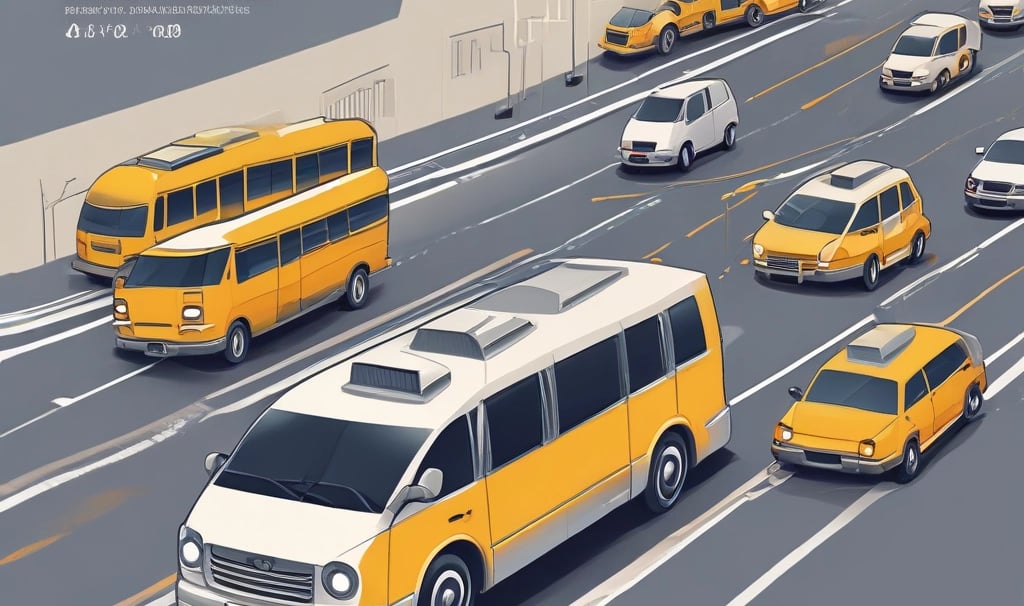The Future of Transportation: How Autonomous Vehicles are Revolutionizing the Industry
TECHNOLOGY
Ali Maan
11/20/20255 min read


Understanding Autonomous Vehicles
Autonomous vehicles (AVs) are increasingly becoming a focal point in the transportation industry, characterized by their ability to navigate and operate without human intervention. The development of these vehicles is driven by complex technologies, including sensors, artificial intelligence, and sophisticated machine learning algorithms. AVs can be classified into several types, ranging from fully autonomous systems to semi-autonomous features that assist human drivers.
The Society of Automotive Engineers (SAE) has established a framework to categorize vehicle automation into six distinct levels, varying from Level 0 to Level 5. At Level 0, there is no automation, and the driver is responsible for all aspects of driving. Level 1 introduces driver assistance systems that might help with steering or acceleration, but the human driver must remain engaged. Moving to Level 2, we see partial automation where both steering and acceleration can be managed by the vehicle, provided the human remains attentive. Level 3 represents conditional automation, allowing the car to manage driving in specific conditions while the driver can disengage briefly. Level 4 signifies high automation, where vehicles can handle most driving tasks but may still require human intervention in certain circumstances. Finally, Level 5 denotes full automation, where the vehicle can perform all driving tasks under all conditions without any human input.
The technology behind AVs relies heavily on various sensors such as Lidar, radar, and cameras to perceive the surrounding environment. These sensors collect critical data to inform the vehicle's AI systems, which employ machine learning techniques to interpret the information, making real-time decisions regarding speed, direction, and obstacles. This intricate amalgamation of technologies is reshaping the future of autonomous driving, making it an increasingly feasible and safer option for everyday transportation.


Impact on Urban Mobility
The integration of autonomous vehicles (AVs) within urban environments is poised to significantly transform urban mobility. One of the most compelling advantages of this shift is the potential reduction in traffic congestion. As AVs operate with precise algorithms, their ability to communicate with each other and adapt to real-time traffic conditions can optimize driving patterns, reducing the frequency of stop-and-go scenarios. This enhanced efficiency may lead to fewer cars on the roads, ultimately alleviating urban gridlock.
In parallel, the advent of autonomous vehicles holds promise for improving public transportation systems. AV technology can facilitate the introduction of last-mile solutions, ensuring that public transit remains accessible and efficient. As cities implement AVs within their transit networks, they stand to benefit from enhanced service coverage, accommodating riders in underserved areas. This approach not only increases rider convenience but can also encourage greater reliance on public transport, thereby reducing reliance on private vehicle ownership.
Accessibility is another critical benefit of AVs, particularly for individuals who are unable to drive due to age, disability, or other factors. By providing these individuals with reliable and safe transportation options, cities can foster greater social inclusion and independence. The deployment of accessible autonomous shuttle services may serve as a case in point, bolstering the mobility needs of diverse populations.
The implications of autonomous vehicles extend into city planning and infrastructure design. Urban areas may need to redesign roadways and allocate spaces that prioritize AV operation, while also ensuring safety for pedestrians and cyclists. Furthermore, the potential for shared autonomous vehicle services suggests a transformative shift in personal mobility that may reduce the overall number of vehicles on the road. Cities like San Francisco and Phoenix are already experimenting with AV technology, showcasing successful applications that highlight the promising future of urban mobility. As more cities adopt this technology, the widespread adoption of AVs has the potential to redefine the transportation landscape markedly.


Economic Transformations in the Transportation Market
The emergence of autonomous vehicles (AVs) marks a pivotal shift in the transportation industry, creating significant economic transformations. Traditional transport business models, such as ride-sharing, logistics, and personal vehicle ownership, face disruption as AV technology matures. As self-driving technology integrates into daily commuting and freight transport, companies that once thrived on human-operated vehicle services may encounter declining demand. The ride-sharing sector, for instance, could pivot towards a model where fleet-owned AVs dominate, consequently redefining pricing structures and service accessibility.
Furthermore, the rise of AVs raises concerns regarding job displacement within driving professions. The need for human drivers in various sectors, including freight and public transportation, may diminish significantly. However, it is essential to consider the potential for job creation in related fields. The growth of autonomous technology will likely necessitate an increased demand for skilled workers in areas such as vehicle maintenance, software development, and safety monitoring. As AVs proliferate, there will be a shift toward tech-driven roles that will foster new job opportunities, offsetting some of the employment losses in traditional driving capacities.
In addition to labor market implications, the landscape for insurance is also being reshaped. As liability issues evolve with automated driving, insurance companies will need to develop new policies covering AVs and their operators. Similarly, regulatory compliance will require thorough updates to ensure safety and accountability within the transportation network. This evolving framework has significant implications for investments in AV technologies, with emerging startups and established players seeking capital to innovate and adapt to the changing market. Investments in AV infrastructure, including charging stations and communication networks, will further stimulate economic growth in this burgeoning sector.
Challenges and the Road Ahead
The integration of autonomous vehicles (AVs) into society presents several challenges that must be addressed to ensure their successful implementation. One of the primary technological barriers is the reliability and safety of autonomous systems. AVs rely on complex algorithms and sensor technologies to navigate roadways, and any failure in these systems can result in accidents. Extensive testing and improvements in machine learning algorithms are essential to enhance the reliability of these vehicles, thereby instilling confidence in potential users.
Moreover, ethical considerations regarding decision-making algorithms complicate the development of AVs. Manufacturers must address the moral dilemmas inherent in programming vehicles to make split-second decisions during unavoidable accidents. This raises questions about liability and accountability when incidents occur, as stakeholders seek clarity on which party—manufacturer, software developer, or the vehicle owner—bears responsibility for AV decisions on potentially life-threatening scenarios.
Regulatory hurdles add another layer of complexity to the integration of autonomous vehicles. Current traffic regulations and laws were designed with human drivers in mind, necessitating comprehensive reviews and potential revisions to accommodate AV technology. Governments around the world must work collaboratively to establish standardized regulations that ensure safety while promoting innovation. Additionally, legislation should include provisions for data privacy, cybersecurity, and ethical design to protect consumers.
Public perception is yet another critical aspect influencing the adoption of autonomous vehicles. Many people remain skeptical about the safety and reliability of AVs, often fueled by negative media portrayals following accidents involving them. Comprehensive public education campaigns that articulate the benefits of AVs, coupled with transparent communication from manufacturers regarding safety measures, are paramount in enhancing public trust.
Looking forward, advancements in artificial intelligence and vehicle-to-everything (V2X) communication are likely to shape the future of autonomous vehicles significantly. These technologies could enhance the interaction between AVs and their environment, improving safety and operational efficiency. As we navigate through these challenges, it is clear that a collaborative approach among stakeholders will be vital in defining the trajectory of autonomous vehicle technology over the next decade.
Explore Insights of Life
Join Maan on a journey of discovery.
Connect
Inspire
aliimran5626@gmail.com
+92324-4296495
© 2025. All rights reserved.
